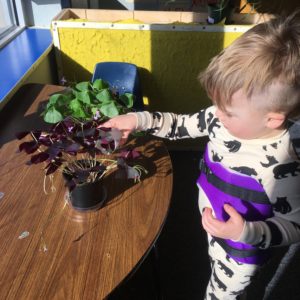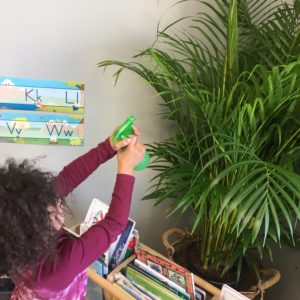What Plants Can Teach Children
 As many of you are aware, now more than ever the childcare community is recognizing the importance of nature-based learning as an important tool in child development. The ability to go back to our “roots” and teach our children with the natural world around us can be a truly magical and enriching experience. Through my writing I’d like to share with you a few ways you can incorporate the use of plants and other natural materials towards your children’s’ development.
As many of you are aware, now more than ever the childcare community is recognizing the importance of nature-based learning as an important tool in child development. The ability to go back to our “roots” and teach our children with the natural world around us can be a truly magical and enriching experience. Through my writing I’d like to share with you a few ways you can incorporate the use of plants and other natural materials towards your children’s’ development.

I’d like to start with what may be the most obvious benefit of having plants in your classroom and that’s their usage in science and math-based learning. With all the various species of plants in the world, there’s endless information to be absorbed. With flowers we can learn of the symbiotic nature of plants and other animals via pollination. From seeds we can track the growth of a plant using rulers and creating a chart displaying words and numbers. We can also encourage our children to predict the outcome or final product of a plant’s growth based on what we have taught them. What if we plant two pots with the hopes of growing beans, but only one is watered and given the proper amount of sunlight for successful growth? Have your children guess which will succeed into full maturity. Then, you can harvest your beans and count the fruits of your labor!
Language development is another area that can benefit from working with plants. There are so many fun new words for children to be exposed to from photosynthesis to carnivorous (think Venus Fly Traps). Also, encouraging your kiddos to describe the plants is a great way to have them utilize their language skills.
 I think probably one of the most awesome and maybe subtle areas this subject can reach is the domain of social and emotional development. The kiddos will learn to care for these plants. Watering them, making sure they are getting the proper sunlight they need and can even help with pruning. This also helps them form an appreciation and healthy relationship with the Earth and all the lives that inhabit it. Even the idea of respecting boundaries can be taught with the help of plants. I remind my friends that we can gently touch the plants, but they also would enjoy personal space. The Sensitive Plant (Mimosa Pudica) is an awesome plant that will respond to touch by folding in on itself. What a great visual metaphor!
I think probably one of the most awesome and maybe subtle areas this subject can reach is the domain of social and emotional development. The kiddos will learn to care for these plants. Watering them, making sure they are getting the proper sunlight they need and can even help with pruning. This also helps them form an appreciation and healthy relationship with the Earth and all the lives that inhabit it. Even the idea of respecting boundaries can be taught with the help of plants. I remind my friends that we can gently touch the plants, but they also would enjoy personal space. The Sensitive Plant (Mimosa Pudica) is an awesome plant that will respond to touch by folding in on itself. What a great visual metaphor!
Lastly, plants are just awesome! To unload my biased opinion, I’d say that aesthetically they manage to uplift and bring life into any room or space. Working with, around and caring for plants can have a positive effect on ones emotional and mental health (which is great for both adults and children). They’re a part of our history, as we are a part of theirs. It’s almost unnatural to deny anyone the joy of caring for and being amongst plants.
ABOUT THE AUTHOR
Jacob Posateri is a three year old teacher at Leap Academy - Madison. He brings his passion for botany to his classroom by incorporating the care of several different species of plants into his classroom routines and curriculum.